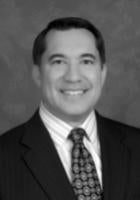On October 9, 2013, the Federal Circuit upheld the District Court’s inequitable conduct verdict based on the submission of false affidavits to the United States Patent & Trademark Office (“PTO”). Intellect Wireless, Inc. v. HTC Corp., 2012-1658. In its precedential opinion, the Federal Circuit (Moore, Prost, & O’Malley) handed down its first decision that affirmed a finding of materiality under the exception to the “but for” standard created in its pioneering opinion in Therasense, Inc. v. Becton, Dickinson & Co., 649 F.3d 1276 (Fed. Cir. 2011) (en banc). The Federal Circuit also stated that the submission of a false declaration to the PTO alone can be enough to show intent to deceive under the “single most reasonable inference” standard. Further, thirty years after it decided Rohm & Haas Co. v. Crystal Chem. Co., 722 F.2d 1556 (Fed. Cir. 1983), the Federal Circuit affirmed that it remains the framework for curing inequitable conduct before the PTO.
Background
This case stemmed from the Northern District of Illinois, where Intellect Wireless sued HTC and numerous other defendants for allegedly infringing patents for sending images and caller ID information over a wireless network. After summary judgment briefing, the District Court bifurcated the case ordering a bench trial on the limited issue of inequitable conduct.
During prosecution of the patents-in-suit and other patents in the family, the inventor and founder of Intellect Wireless, Daniel Henderson, submitted a Rule 131 declaration claiming that he had actual reduction to practice of his invention (i.e., that he built a working prototype of a mobile device that could send or receive messages and provide caller ID). A short time later, Henderson submitted additional declarations in the same and other related applications continuing to swear that he built a working prototype of his invention. These declarations were necessary to overcome prior art that was cited by the PTO. During trial, it was revealed that Henderson never actually built a prototype that could wirelessly send or receive images or caller ID as he swore in his declarations to the PTO.
Materiality
Given that Henderson never actually reduced his invention to practice, the Federal Circuit determined that “[i]t is undisputed that Mr. Henderson’s original declaration was unmistakably false.” Intellect, slip op. at 5. The Federal Circuit went on to hold that an unmistakably false declaration “alone establishes materiality.” Id. Thus, the Federal Circuit has confirmed that false statements to the PTO during prosecution are enough to fulfill the materiality requirement under Therasense. This was the first case since Therasense in which the Federal Circuit found that the exception to “but for” materiality applies.
Intent
After Therasense, many commentators noted that the heightened standard for intent to deceive would be difficult to prove. With its decision in Intellect, the Federal Circuit reaffirmed that “[s]ubmission of an affidavit containing fabricated examples of actual reduction to practice in order to overcome a prior art reference raises a strong inference of intent to deceive.” Intellect, slip op. at 9-10. In fact, the Federal Circuit went further, noting that intent could be found based solely on the content of false declarations to the PTO. Id. at 10.
In this case, the Federal Circuit found that intent to deceive was further supported by Henderson’s actions. Namely, he submitted false declarations in nearly a dozen applications within the same patent family. Further, he manipulated the Smithsonian Institution and submitted a Smithsonian press release to the PTO that contained false information. According to the Federal Circuit, these actions amounted to a pattern of deceit that bolstered the District Court’s finding of intent to deceive the PTO.
Curing Inequitable Conduct
In its opinion, the Federal Circuit also reaffirmed Rohm & Haas as the only avenue to cure inequitable conduct committed during prosecution. Intellect, slip op. at 5-7. Under Rohm & Haas, Henderson had to expressly advise the PTO of the misrepresentations and their location, and provide the PTO the true facts. Significantly, Henderson could not merely supply a new set of facts without calling to the PTO’s attention the previous false statements. The Federal Circuit reiterated that full and open disclosure of the misrepresentation to the PTO identifying the false information is needed to cure inequitable conduct, because the PTO and public need to know the actual facts. Finally, the Federal Circuit reiterated that Rohm & Haas was not modified or marginalized by Therasense and remains the standard for curing inequitable conduct. Id. at 7-8.
Conclusion
With its decision in Intellect Wireless v. HTC, the Federal Circuit has confirmed that a false declaration to the PTO is material. It has also established that the act of submitting the false declaration can be enough, in some instances, to establish the intent necessary for inequitable conduct. However, additional facts supporting an intent to deceive should be developed to rebut any good faith explanation made by the inventor. Finally, the Federal Circuit has reaffirmed that Rohm & Haas remains the only avenue by which an inventor can correct inequitable conduct during prosecution.




 />i
/>i
